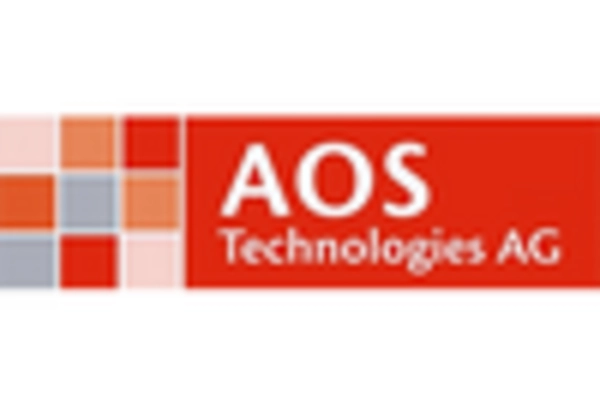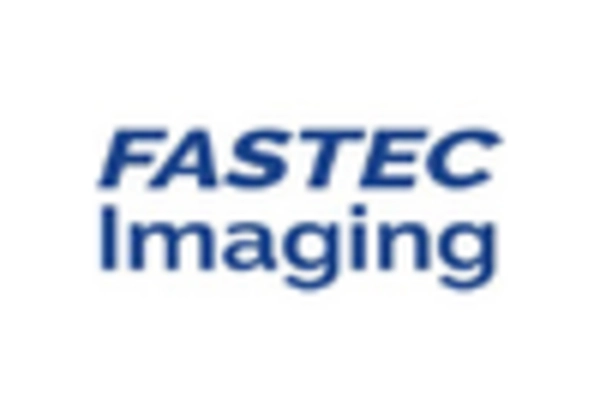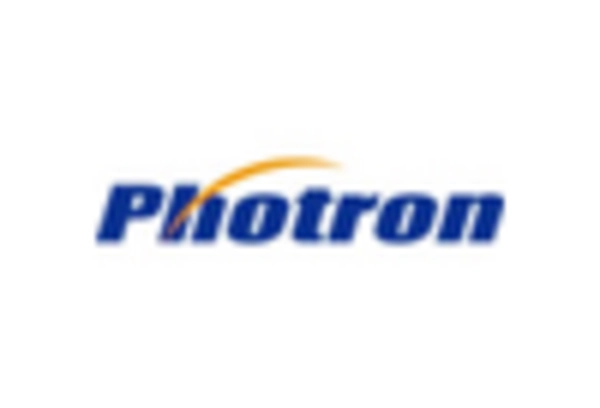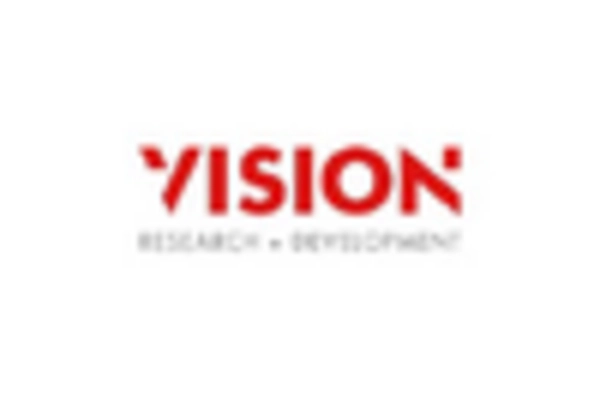Technological Innovations in Imaging
Technological advancements in imaging technology are significantly influencing the high speed-camera market. Innovations such as improved sensor technology, enhanced frame rates, and better image processing capabilities are enabling the production of high-quality footage at unprecedented speeds. For instance, cameras capable of capturing over 1,000 frames per second are becoming more accessible, appealing to a broader range of industries, including automotive and scientific research. The high speed-camera market is witnessing a shift towards compact and lightweight designs, making these cameras more user-friendly and versatile. Additionally, the integration of artificial intelligence in camera systems is expected to streamline workflows and enhance user experience. As these technologies continue to evolve, they are likely to attract new customers and applications, further propelling the growth of the high speed-camera market.
Growing Interest in Automotive Testing
The high speed-camera market is experiencing growth due to the increasing interest in automotive testing and development. As the automotive industry focuses on enhancing safety and performance, high speed-cameras are becoming essential tools for crash testing and vehicle dynamics analysis. These cameras allow engineers to capture high-resolution footage of vehicle behavior during tests, providing valuable insights into design improvements. The high speed-camera market is projected to expand as automotive manufacturers invest in advanced imaging solutions to ensure compliance with safety regulations and improve product quality. Additionally, the rise of electric and autonomous vehicles is likely to create new opportunities for high speed-camera applications in testing and validation processes. As a result, manufacturers are expected to innovate and adapt their offerings to meet the evolving demands of the automotive sector.
Increased Investment in Sports Analytics
The high speed-camera market is benefiting from increased investment in sports analytics, as teams and organizations seek to gain a competitive edge. High speed-cameras are essential for capturing detailed motion analysis, enabling coaches and athletes to refine techniques and strategies. The market for sports analytics is projected to grow at a CAGR of around 20% over the next few years, indicating a robust demand for high speed-camera technology. This trend is particularly evident in professional sports leagues, where performance analysis has become integral to training regimens. The high speed-camera market is thus positioned to capitalize on this growing interest, as sports organizations invest in advanced imaging solutions to enhance player performance and viewer engagement. As a result, manufacturers are likely to focus on developing specialized cameras tailored to the unique requirements of the sports sector.
Rising Demand in Entertainment and Media
The high speed-camera market is experiencing a notable surge in demand within the entertainment and media sectors. As filmmakers and content creators increasingly seek to capture high-quality slow-motion footage, the need for advanced high speed-cameras has become paramount. This trend is reflected in the market's projected growth rate of approximately 8.5% annually over the next five years. The ability to produce visually stunning effects in movies, commercials, and live broadcasts is driving investments in high speed-camera technology. Furthermore, the integration of these cameras in virtual reality and augmented reality applications is likely to enhance their appeal, thereby expanding the high speed-camera market. As a result, manufacturers are focusing on developing innovative solutions that cater to the evolving needs of content creators, ensuring a competitive edge in this dynamic landscape.
Expansion in Scientific Research Applications
The high speed-camera market is witnessing expansion in scientific research applications, as researchers increasingly rely on high-speed imaging to capture rapid phenomena. Fields such as physics, biology, and engineering are utilizing high speed-cameras to study processes that occur in fractions of a second. This trend is supported by the growing emphasis on precision and accuracy in experimental setups, which high speed-cameras can provide. The high speed-camera market is expected to see a rise in demand from academic institutions and research organizations, as they invest in advanced imaging technologies to facilitate groundbreaking studies. Furthermore, collaborations between technology providers and research institutions are likely to foster innovation, leading to the development of specialized cameras that cater to specific scientific needs. This synergy could significantly enhance the capabilities of researchers, thereby driving growth in the high speed-camera market.
















Leave a Comment